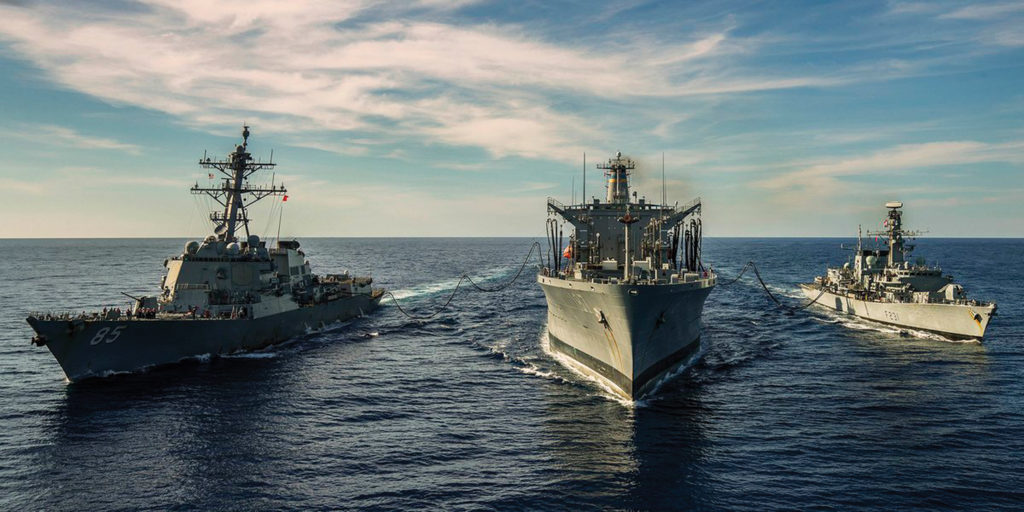
Two of the most powerful countries in the world — the United States (US) and the United Kingdom (UK) — on Wednesday, January 16 finished it six-day joint drills in the disputed South China Sea.
The two countries conducted communication drills, division tactics and personnel exchange from January 11 to 16. The Arleigh-Burke guided-missile destroyer USS McCampbell and the Royal Navy Type 23 frigate HMS Argyll were used by the U.S. and UK respectively.
USS McCampbell commanding officer Commander Allison Christy said that the rare six-day joint exercises with the British fleet gave them the chance to establish rapport and “learn from each other.”
“Professional engagement with our British counterparts allows us the opportunity to build upon our existing strong relationships and learn from each other,” Christy said as reported by The Philippine Star.
HMS Argyll commanding officer Commander Toby Shaughnessy, meanwhile, called the U.S. Navy their “closest ally” noting that they work hand in hand to promote security in the regions where they are deployed.
“Following on from our successful time in North East Asia, contributing to promoting regional security and prosperity, we are pleased with the opportunity to train alongside our closest ally,” Shaughnessy said.
Both warships were deployed in the Indo-Pacific Region. The USS McCampbell commander noted that the U.S. Navy routinely trains with its allies and partners but having the chance to conduct exercises with the Royal Navy is considered a “rare opportunity.”
The said exercises were meant to resolve common maritime security issues in their assigned region. HMS Argyll is deployed in the region in support of regional security and stability while USS Campbell Fleet is considered part of the U.S. Seventh Fleet.
In a report from CNN, UK Defense Secretary Gavin Williamson even floated the idea of a new British military base in the Asia region in an interview earlier this year with the Sunday Telegraph.
Less than a week before their joint exercises, the USS McCampbell sailed within 12 nautical miles of the Paracel Islands, earning a diplomatic complaint from Beijing.
“We urge the U.S. to immediately stop such provocative actions,” Chinese Foreign Ministry spokesperson Lu Kang previously said.
Despite the July 2016 arbitral ruling that invalidated its historic claim over the South China Sea, the said country still claims sovereignty to certain areas in the region including the West Philippine Sea, which is considered part of Manila’s exclusive economic zone.





